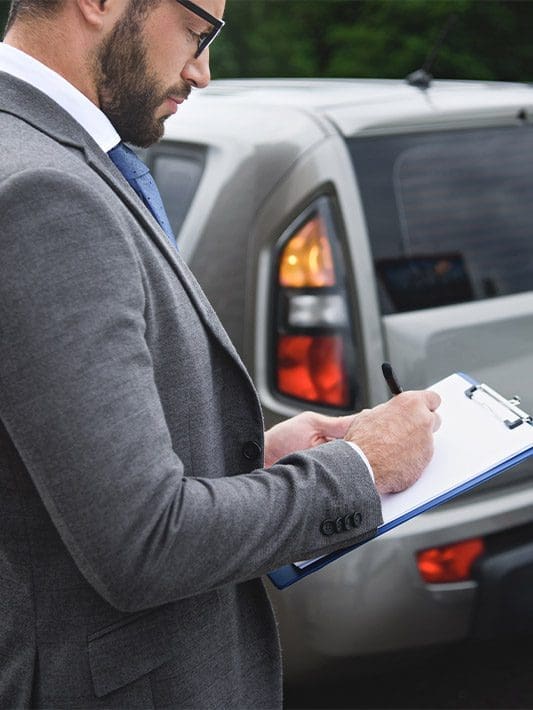How does car insurance work?
Each coverage type includes a limit that denotes the maximum that your policy will cover. For example, if your medical limit is $10,000, your car insurance will cover all medical expenses up to $10,000. These limits vary depending on what type of coverage you have and how much you pay for the policy. If you have extensive coverage and pay a high insurance premium, you may have a higher coverage limit.
What’s covered by a basic auto insurance policy?
The minimum required car insurance coverage varies by state, and so will your limits and types of car insurance coverage. However, the main kinds of car insurance covered include the following:
Personal Injury Protection (PIP) or MedPay:
This covers your medical expenses after an accident, regardless of fault
Liability insurance:
Pays you for expenses if you were at fault for an accident. In other words, it will help to pay for another party’s injury in the case that you caused the accident.
Underinsured and uninsured motorist coverage:
Covers damage for drivers that don’t have insurance or are underinsured for the damage they caused.
Other types of car insurance coverage include the following:
Collision coverage:
Covers damage for drivers that don’t have insurance or are underinsured for the damage they caused.
Comprehensive coverage:
Pays for repair expenses that are outside of your control. Examples include severe weather events, hitting an animal on the road, vandalism, and theft.
Gap insurance:
Covers the difference between how much you owe on your vehicle and the real market cost.
How does liability insurance work?
Liability insurance is used if you are at fault for an accident. So if you caused an accident and people were injured, killed, or damage to their vehicle was incurred, liability insurance will help to cover you.
Bodily liability insurance covers expenses related to injuries and deaths, including compensation for medical bills, and pain and suffering, etc.
Property damage liability pays for repair costs from other vehicles as a result of the accident.
Your car insurance will pay up to the limit that is listed on your policy. After you reach the limit, you are liable for all other expenses.
MedPay and PIP
Liability insurance is used if you are at fault for an accident. So if you caused an accident and people were injured, killed, or damage to their vehicle was incurred, liability insurance will help to cover you.
Bodily liability insurance covers expenses related to injuries and deaths, including compensation for medical bills, and pain and suffering, etc.
Property damage liability pays for repair costs from other vehicles as a result of the accident.
Your car insurance will pay up to the limit that is listed on your policy. After you reach the limit, you are liable for all other expenses.
How does uninsured / underinsured motorist coverage work?
If you cause a car accident and one of the people involved either does not have car insurance or doesn’t have enough car insurance to cover the damages, then uninsured/underinsured motorist coverage will cover you.
Comprehensive coverage
Comprehensive coverage covers damage that is not related to a car accident. Instead, it covers other damages that are not in your control. Comprehensive coverage covers things like fires, extreme weather, hitting an animal on the road, falling objects, vandalism, riots, and theft.
Collision coverage
This type of coverage covers you for expenses from damage to your car as a result of a collision, regardless of fault. Collisions include crashing into another car, hitting a stationary object like a tree or sign, or hitting a pothole.
Gap insurance
If you’re still paying off your car through a loan or lease and get into an accident and total the vehicle or it’s stolen, you could end up needing to pay more than the actual value of your car. Gap insurance will pay the difference between the real cash value of the vehicle and the amount you owe.
What doesn’t car insurance cover?
Although car insurance can be quite extensive, there are some things that it does not cover.
Regular maintenance:
Regular maintenance and repairs to your car due to wear and tear are not covered. For example, an oil change or a bad transmission will not be covered by car insurance.
Damage that exceeds your limits:
If you incur damages that exceed your coverage limits, you will be responsible for everything after you reach the limit. Meaning that if you are covered for $50,000 for property damage in an accident and you need to pay $60,000, you are responsible for paying the remaining $10,000 out-of-pocket.
Ridesharing:
Ridesharing is a common gig now for many people. However, many insurance companies require additional ridesharing insurance for the damage caused while driving for money.
Excluded drivers:
If you have any drivers who are specifically excluded in your policy and they get into an accident driving your car, you will not be covered.
Exotic and vintage cars:
Many exotic and vintage cars that are difficult to repair or replace may be excluded from car insurance. For example, if you have a Lamborghini or a vintage vehicle, you may require a special policy for coverage.



